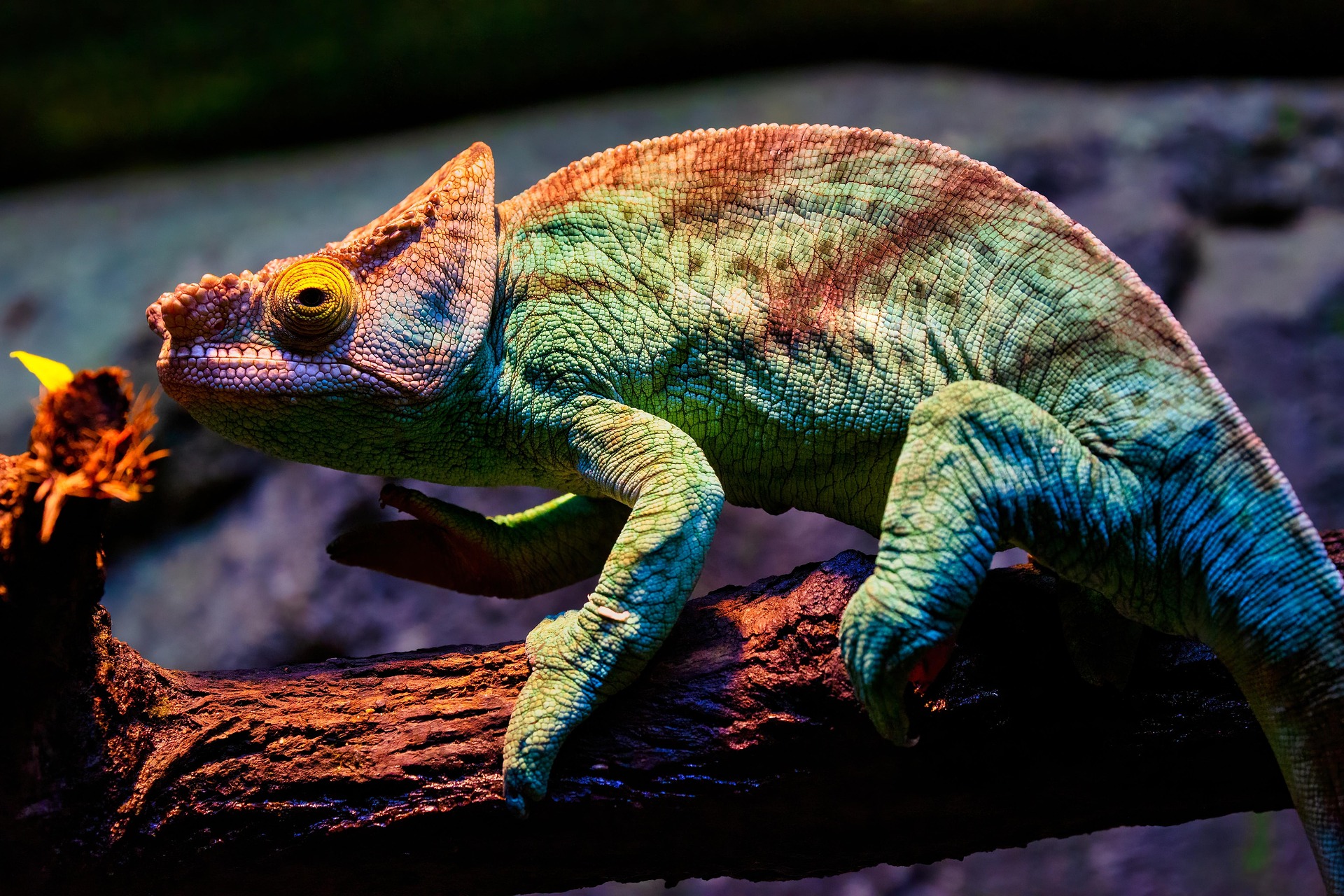Have you ever stopped to stare at a chameleon and wondered how it manages to shift its skin color? It’s one of the most fascinating feats in the animal kingdom! We’re diving into the science behind this amazing ability.
Not Just for Camouflage!
Many people think chameleons change color only to blend in with their surroundings. While camouflage is definitely a factor, it’s just one piece of the puzzle.
What’s Really Going On?
Chameleons change color primarily due to specialized cells in their skin called iridophores. These cells contain tiny nanocrystals that reflect light. The way these nanocrystals are arranged determines the colors we see!
How it Works: A Little Science!
Think of it like this: the nanocrystals can adjust the spacing between them. When the spacing changes, different wavelengths of light are reflected back to our eyes. For example, when the nanocrystals are closer together, they reflect blue and green light. When they’re further apart, they reflect yellow and red.
Why Do They Change?
So, if it’s not just camouflage, why do chameleons change color at all? Here are a few key reasons:
1. Communication
Chameleons use color to communicate with each other! Brighter colors can signal dominance or attract a mate. A male chameleon might flash vibrant hues to show off to a female!
2. Temperature Regulation
Chameleons are ectothermic, meaning they rely on external sources of heat to regulate their body temperature. Darker colors absorb more heat, while lighter colors reflect it. So, a chameleon might darken its skin to warm up in the morning or lighten it to cool down during the hottest part of the day.
3. Mood & Health
Just like we have facial expressions, chameleons can display their mood through color! Stress, fear, or even contentment can influence their color changes. A stressed chameleon might turn dull or dark.
Mind-Blowing Facts!
- Chameleons don’t just change color – they change texture too! Their skin isn’t perfectly smooth. The nanocrystals are organized in layers, and the way these layers are arranged influences how light is reflected, creating different textures.
- They can change color incredibly fast! Some changes happen in a matter of seconds.
- Chameleons can even mimic the colors of other chameleons! It’s like a visual conversation.
Protecting These Amazing Creatures
Chameleons are facing threats in the wild due to habitat loss and the pet trade. Here’s how you can help:
- Support organizations working to protect their natural habitats.
- If you’re considering getting a chameleon as a pet, research responsible breeders and avoid purchasing wild-caught animals.
- Spread awareness about the importance of chameleon conservation!
